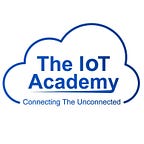Full Stack Java Developer Roadmap for Beginners 2023
Java Developer Roadmap
Introduction
At the close of 2021, the TIOBE index listed Python as the most popular programming language, with Java following closely behind in second place. The Index is a monthly update that provides data on the relative popularity of various programming languages.
This bodes well for Java, indicating that experts in the field, such as full-stack Java developers, will be in high demand for the foreseeable future. Here, we’ll examine the java full stack developer roadmap through 2023 to see how you may turn your expertise in the language into a fulfilling and financially rewarding profession.
In the context of developer job opportunities in the cloud, we’ll also provide a brief overview of the java roadmap for beginners, Java and its place in the industry.
Java Full Stack Can See Where They’re Going With This
Let’s look at the steps necessary to become a full-stack Java developer. Programmers proficient in client-side and server-side technologies, referred to as “full stack,” are in great demand. One who develops at every level of the stack.
It is important to keep in mind that this Java developer roadmap is not your only option. The adage says that there are several routes one may take to reach the peak. This road plan, however, takes a practical, reasonable, and complete approach.
Website Design and Development Front-End
Your future as a Java developer depends on mastering these tools and techniques. You must become proficient with the following tools for creating websites:
● CSS
● HTML
● JavaScript
● TypeScript
Once you’ve done that, it’s time to learn about IDEs or Integrated Development Environments:
Microsoft’s Sublime Text 3 is now integrated into the Visual Studio Code IDE. Since you’re interested in front-end programming, you should be familiar with front-end frameworks such as:
● Angular
● React
● VueJS
Lastly, you need to familiarize yourself with User Interface (UI) frameworks like Bootstrap, CSS and Material UI.
Programming on the Back End
Mastery of Core Java, up to and including Java 8 features (Java functional programming), is a given. When we talk about Java, we can’t forget that back-end engineers need to know how to use Java build tools like:
● Gradle
● Maven
Back-end technology also has its IDEs, similar to those used for front-end development:
Intellij IDEA Spring Tool Suite for the Eclipse IDE
Due to the varied database needs of their clients, back-end engineers should be well-versed in No SQL and relational databases.
● Servers like Apache Cassandra and MongoDB don’t need a structured query language.
● RavenDB
● Redis
● Databases that are set up in a relational format
● Including Microsoft SQL Server, MySQL, Oracle, and PostgreSQL
● Databases hosted on Microsoft’s SQL Server in the cloud
● CosmosDB
● DynamoDB
Additional required back-end technologies consist of the following:
● Build DAO/Repository Layers
● JPA/Hibernate
● JPA Data Spring
● Use Java’s Jersey REST Framework with RestEasy to create REST APIs.
● Protecting REST APIs with Spring Boot and Spring Security
● JWT Authorization based on Role
Web Developer Training: The Whole Shebang
To hone your java full stack developer programmer’s general knowledge and skills, create a development roadmap.
● Get familiar with GIT and start your repositories on GitHub. If you write any code, please distribute it to others. When it comes to managing projects and keeping track of changes, GIT is invaluable.
● Learn the HTTP(S) protocol and the many types of requests (DELETE, GET, OPTIONS, POST, PUT, PATCH).
● Learn Google search strategies, particularly the advanced ones, if you haven’t already.
● Explore the world of data structures and algorithms by doing some reading.
● Find out what Docker is and how to use it to deploy your projects.
● You may learn CI/CD best practices and the Jenkins tool to aid you with this process.
● Bug tracking software and project management tools like Jira.
Deployment
With the cloud serving as the infrastructure of the future, master deployment with:
● Availability Zones in the AWS and Azure Clouds
● Testing on the Google Cloud and Heroku Cloud
Spend some time learning about tools for testing behavior, integration, load, and units, such as:
● Assertj
● CitrusFramework
● Cucumber-JVM
● Gatling
● Hoverfly-java
● Mockserver
● Rest-assured
● Truth
● Take into account studying Selenium to fulfill end-to-end testing responsibilities.
Your route may benefit from more resources. Some roadmaps, for instance, might be quite complicated and comprehensive, including features like “Logging,” “Caching,” “Object-Relational Mapping,” “API Clients,” and “Task Scheduling.” Of course, you can always learn more things along the line, but the above plan is an excellent starting point for any aspiring Java developer.
What Do You Think of a Job as a Java Developer in the Cloud?
Considering the widespread use of Java, why not aim for a career as a Java developer with a concentration on cloud computing? After all, cloud computing is on the upswing, making the marriage of a widely used programming language with the latest and greatest in computing a certain winner. We hope this java roadmap for beginners gives you all the required information. In case you want to know about Full Stack Java Development in detail you can enroll for the courses offered by The IoT Academy.
